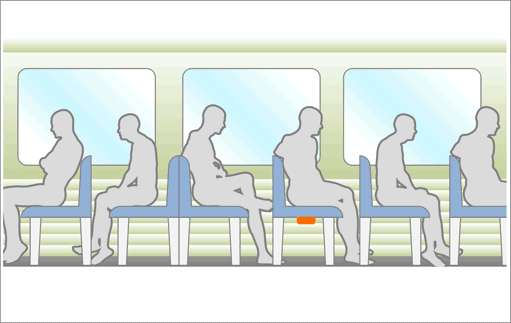Radiological Exposure Devices (REDs)
Radiological Exposure Devices (REDs) = Hidden Sealed Radioactive Source
- Definition of Radiological Exposure Device
- Causes exposure (Animations) but NOT usually contamination
- Example: hiding a hidden radioactive source on a subway or in a sports arena, where people would unknowingly receive radiation exposure (See Figure 1)
- Dose from exposure and specific effect on people would depend on
- Source properties: isotope, activity, amount
- Proximity of each person to the source
- Length of time people were in proximity to the source
- Whether a person's whole body or only a portion of the body received exposure
Figure 1. Hidden Sealed Radioactive Source (Radiological Exposure Device) in Train Car
150 Ci Iridium-192 Source Under Seat

Ci = Curie; R = Roentgen; Γ constant = 4.69 R-cm2/mCi-hr.
Note: This graphic describes radiation exposure rate (in air) in units of R/Hr. For gamma radiation, this is roughly equivalent to a radiation absorbed dose rate in units of cGy/hour, which must also take into account any shielding present, e.g., material in the seats in this example.
References:
- Responding to an RDD / RED Emergency: the HHS Playbook, guidance for executive decision makers within the Department of Health and Human Services (HHS) in the event of an actual radiological terrorist attack in a U.S. city. (HHS/ASPR, April 2010)
- Radiation Exposure Device information sheet for the general public (HHS/CDC)
- The Regulation and Use of Radioisotopes in Today’s World (PDF - 1.1 MB) (NRC, April 2020)
- Radiological Sources of Potential Exposure and/or Contamination (PDF - 3.1 MB) (US Army Public Health Center, TG-238, January 2020)
- This document provides details about radioisotopes of potential concern and where they are used. It updates the TG-238 document from 1999.
top of page


